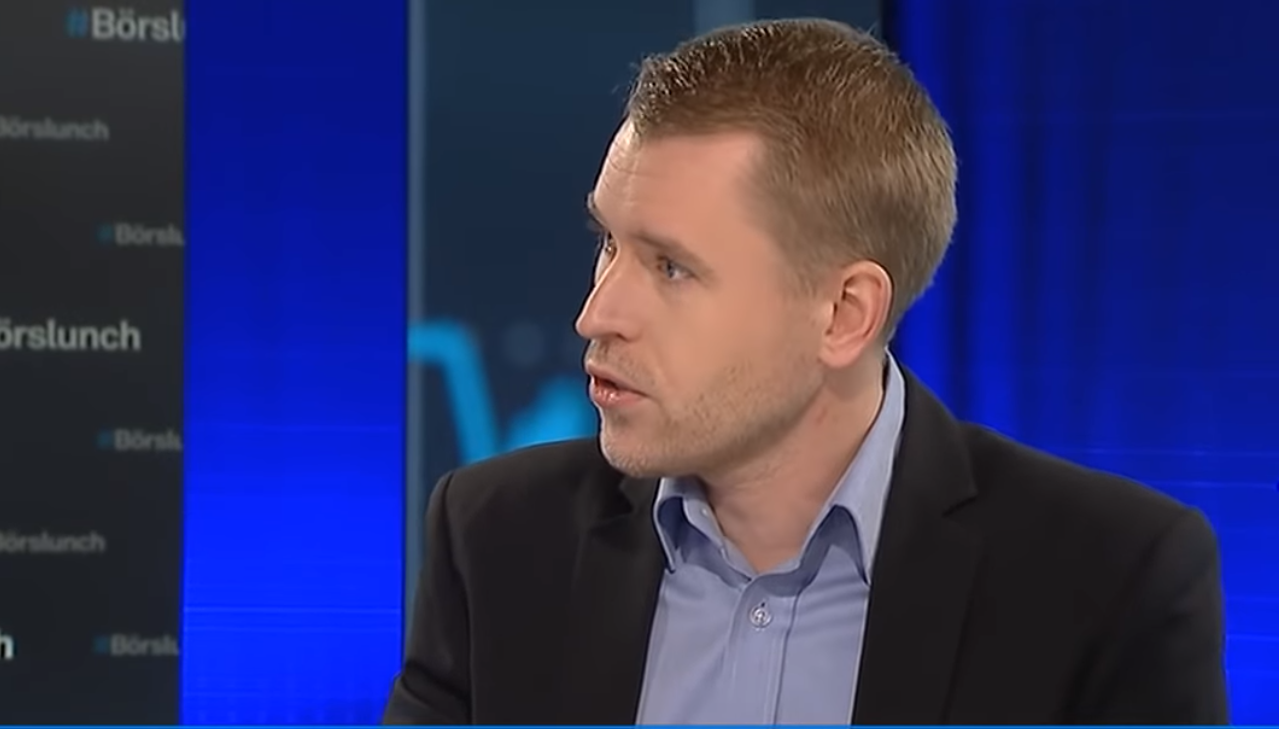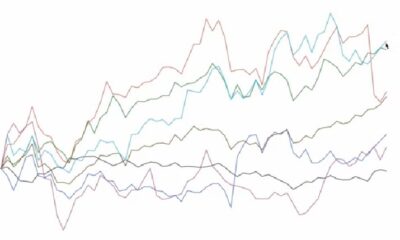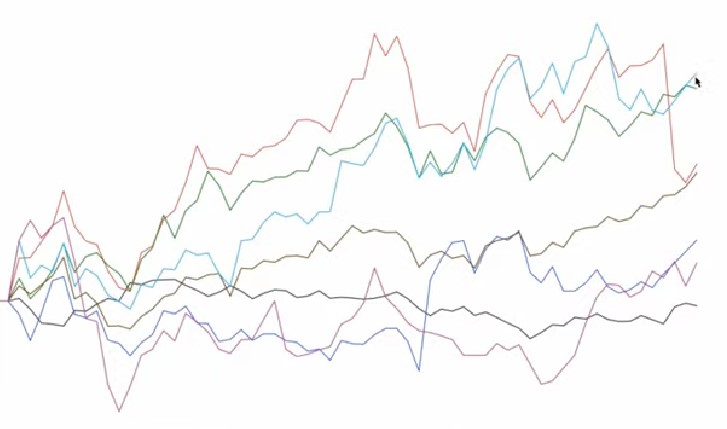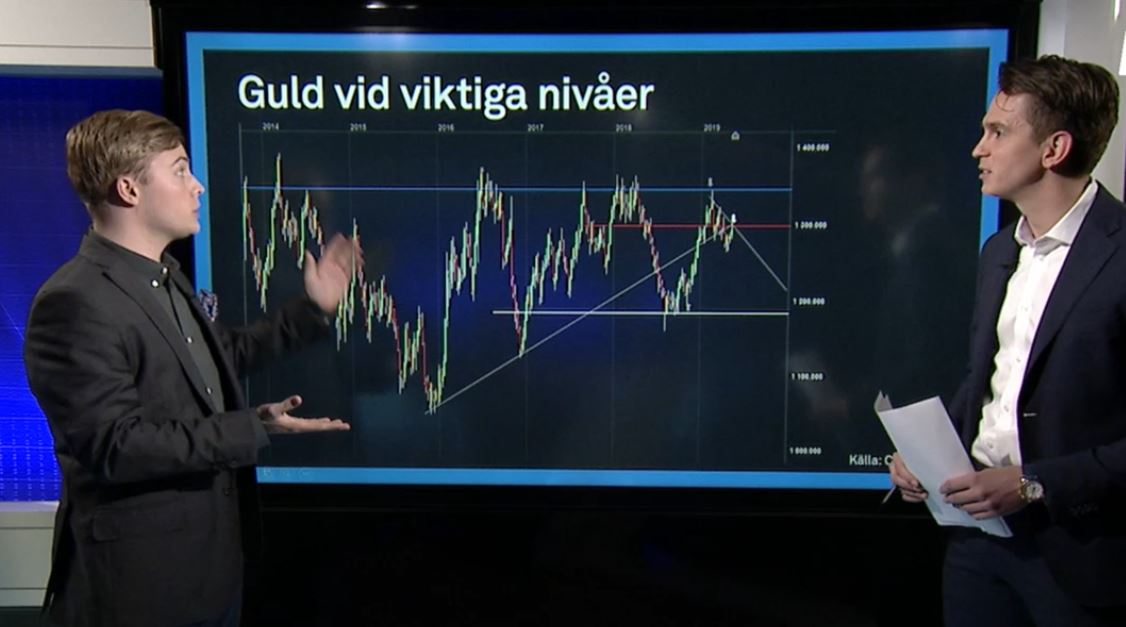Analys från DailyFX
The Triple-Bottom Trap and How to Dodge it
Talking Points:
- The Triple-Bottom Pattern in EUR/USD
- Practical Application of Elliott Wave
- The Right Way to Trade a Triple Bottom
Last week’s Federal Open Market Committee (FOMC) meeting caught many currency traders on the wrong side of the US dollar (USD) trade, and it cost them dearly! With the Fed’s exclusion of a small phrase pertaining to tightening fiscal conditions, the markets quickly priced in a reduction of bond purchases at the December FOMC meeting, and the dollar soared in response. However, those who didn’t have a EURUSD short at work prior to the announcement had a tough time finding a safe entry.
The six-hour EURUSD chart (see below) plummeted towards the 1.3470 double bottom that was formed in October, thus setting up a possible triple bottom. In my experience, triple bottoms rarely hold and reverse the market. More times than not, triple bottoms wind up failing and breaking to new lows, but here’s the trick: Never trade the first test of a triple bottom. Instead, wait for a completed Elliott wave corrective rally to position a trade for the attack—and ultimate defeat—of the triple bottom.
Guest Commentary: The Triple-Bottom Pattern in EUR/USD

Using Elliott Wave to Trade the Real Break of the Triple Bottom
Moving back to the EURUSD example, the FOMC meeting (yellow label) dropped the pair quite sharply in a third wave (green labels) of a five-wave Elliott trend. Just as we would expect, the initial test of the 1.3470 triple bottom held support and put in a short-term bounce, which we can identify as a fourth-wave correction of a five-wave Elliott trend.
If we can time it right, we can use Fibonacci to pinpoint the zone where this bounce from doomed support will terminate, thus setting up a wave-five slide to new lows.
Guest Commentary: The Key EUR/USD Resistance Zone

At this point, I’m going to get into some of the finer points of Elliott wave to set up the trade. In future articles, we will dig deeper and study how to do this for yourself. To begin, we need to construct FRZs, or Fibonacci Resistance Zones, which should capture the end of the green wave four (W4).
1.3573: 38% price retracement of green W.3
1.3572: 261.8% projection of on-going green W.4 compared to same-degree W.2
1.3565: Typically, fourth waves will terminate at the area of the prior fourth wave of one lesser degree. Green W.4 will test the prior fourth wave (orange) at 1.3565
1.3523: 23.6% price retracement of green W.3
1.3522: 261.8% projection of ongoing green W.4 compared to same-degree W.2
How to Properly Trade This Triple Bottom
Traders who are not armed with the tools to correctly trade for the break of the key 1.3470 level are being stopped out right now. They tried their best to align themselves with the trend and went short EURUSD a few days too early, only to watch the pair climb back above 1.3470 on this bounce. As their stop losses are being triggered, we are setting our sell limits to move into short positions.
Sell half the position at 1.3520 and another half position at 1.3570 with stop losses at 1.3605. Book partial profits at 1.3450 and move the stop loss to breakeven.
By Todd Gordon of TradingAnalysis.com
Analys från DailyFX
EURUSD Weekly Technical Analysis: New Month, More Weakness
What’s inside:
- EURUSD broke the ‘neckline’ of a bearish ‘head-and-shoulders’ pattern, April trend-line
- Resistance in vicinity of 11825/80 likely to keep a lid on further strength
- Targeting the low to mid-11600s with more selling
Confidence is essential to successful trading, see this new guide – ’Building Confidence in Trading’.
Coming into last week we pointed out the likelihood of finally seeing a resolution of the range EURUSD had been stuck in for the past few weeks, and one of the outcomes we made note of as a possibility was for the triggering of a ’head-and-shoulders’ pattern. Indeed, we saw a break of the ’neckline’ along with a drop below the April trend-line. This led to decent selling before a minor bounce took shape during the latter part of last week.
Looking ahead to next week the euro is set up for further losses as the path of least resistance has turned lower. Looking to a capper on any further strength there is resistance in the 11825-11880 area (old support becomes new resistance). As long as the euro stays below this area a downward bias will remain firmly intact.
Looking lower towards support eyes will be on the August low at 11662 and the 2016 high of 11616, of which the latter just happens to align almost precisely with the measured move target of the ‘head-and-shoulders’ pattern (determined by subtracting the height of the pattern from the neckline).
Bottom line: Shorts look set to have the upperhand as a fresh month gets underway as long as the euro remains capped by resistance. On weakness, we’ll be watching how the euro responds to a drop into support levels.
For a longer-term outlook on EURUSD, check out the just released Q4 Forecast.
EURUSD: Daily
—Written by Paul Robinson, Market Analyst
You can receive Paul’s analysis directly via email bysigning up here.
You can follow Paul on Twitter at@PaulRobinonFX.
Analys från DailyFX
Euro Bias Mixed Heading into October, Q4’17

Why and how do we use IG Client Sentiment in trading? See our guide and real-time data.
EURUSD: Retail trader data shows 37.3% of traders are net-long with the ratio of traders short to long at 1.68 to 1. In fact, traders have remained net-short since Apr 18 when EURUSD traded near 1.07831; price has moved 9.6% higher since then. The number of traders net-long is 15.4% lower than yesterday and 16.4% higher from last week, while the number of traders net-short is 0.4% higher than yesterday and 10.5% lower from last week.
We typically take a contrarian view to crowd sentiment, and the fact traders are net-short suggests EURUSD prices may continue to rise. Positioning is more net-short than yesterday but less net-short from last week. The combination of current sentiment and recent changes gives us a further mixed EURUSD trading bias.
— Written by Christopher Vecchio, CFA, Senior Currency Strategist
To contact Christopher Vecchio, e-mail cvecchio@dailyfx.com
Follow him on Twitter at @CVecchioFX
To be added to Christopher’s e-mail distribution list, please fill out this form
Analys från DailyFX
British Pound Reversal Potential Persists Heading into New Quarter

Why and how do we use IG Client Sentiment in trading? See our guide and real-time data.
GBPUSD: Retail trader data shows 38.2% of traders are net-long with the ratio of traders short to long at 1.62 to 1. In fact, traders have remained net-short since Sep 05 when GBPUSD traded near 1.29615; price has moved 3.4% higher since then. The number of traders net-long is 0.1% higher than yesterday and 13.4% higher from last week, while the number of traders net-short is 10.6% lower than yesterday and 18.3% lower from last week.
We typically take a contrarian view to crowd sentiment, and the fact traders are net-short suggests GBPUSD prices may continue to rise. Yet traders are less net-short than yesterday and compared with last week. Recent changes in sentiment warn that the current GBPUSD price trend may soon reverse lower despite the fact traders remain net-short.
— Written by Christopher Vecchio, CFA, Senior Currency Strategist
To contact Christopher Vecchio, e-mail cvecchio@dailyfx.com
Follow him on Twitter at @CVecchioFX
To be added to Christopher’s e-mail distribution list, please fill out this form
-
Analys från DailyFX10 år ago
EUR/USD Flirts with Monthly Close Under 30 Year Trendline
-
Marknadsnyheter5 år ago
BrainCool AB (publ): erhåller bidrag (grant) om 0,9 MSEK från Vinnova för bolagets projekt inom behandling av covid-19 patienter med hög feber
-

 Marknadsnyheter2 år ago
Marknadsnyheter2 år agoUpptäck de bästa verktygen för att analysera Bitcoin!
-
Analys från DailyFX12 år ago
Japanese Yen Breakout or Fakeout? ZAR/JPY May Provide the Answer
-

 Marknadsnyheter2 år ago
Marknadsnyheter2 år agoDärför föredrar svenska spelare att spela via mobiltelefonen
-
Analys från DailyFX12 år ago
Price & Time: Key Levels to Watch in the Aftermath of NFP
-
Analys från DailyFX8 år ago
Gold Prices Falter at Resistance: Is the Bullish Run Finished?
-

 Nyheter7 år ago
Nyheter7 år agoTeknisk analys med Martin Hallström och Nils Brobacke










